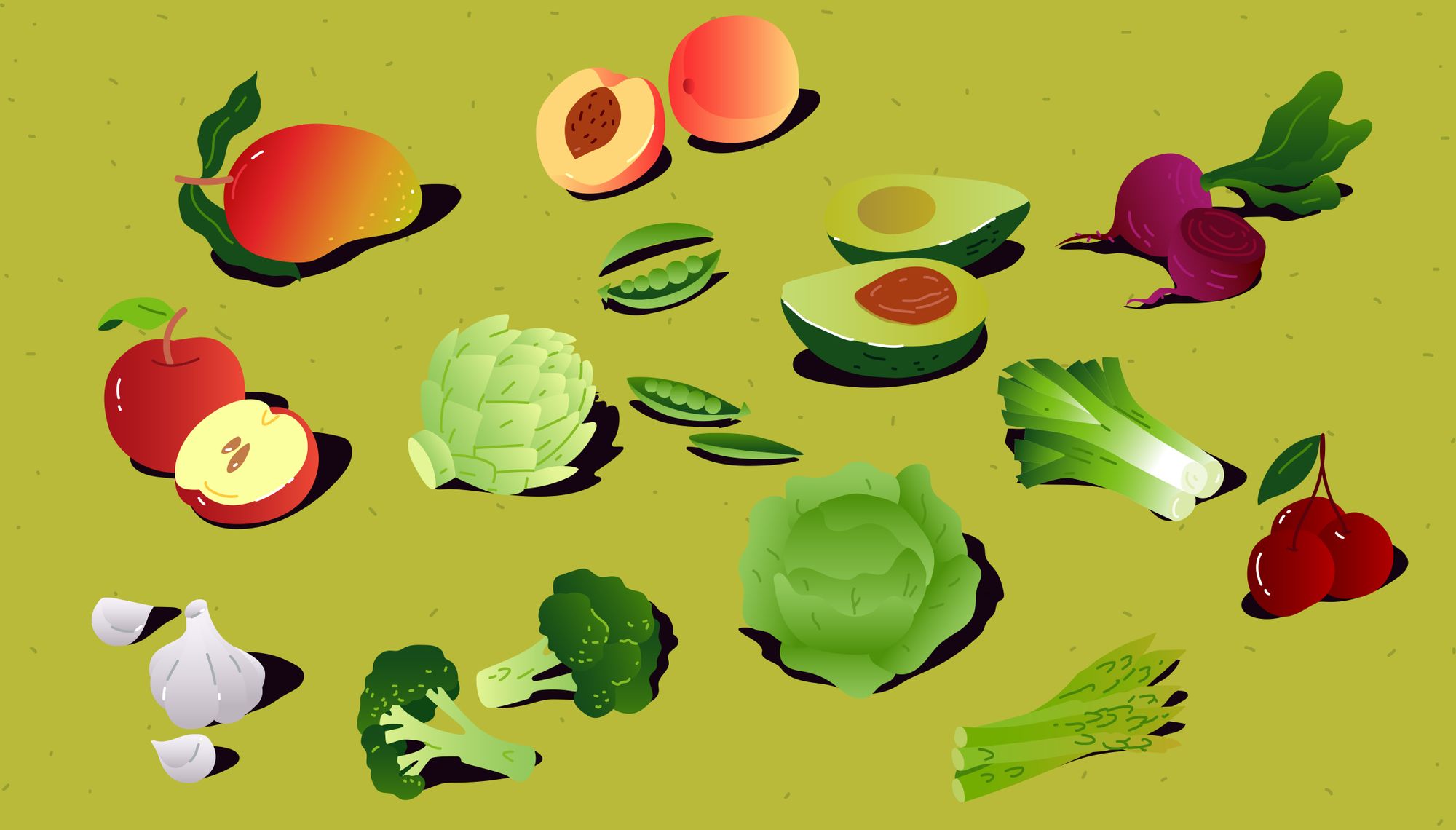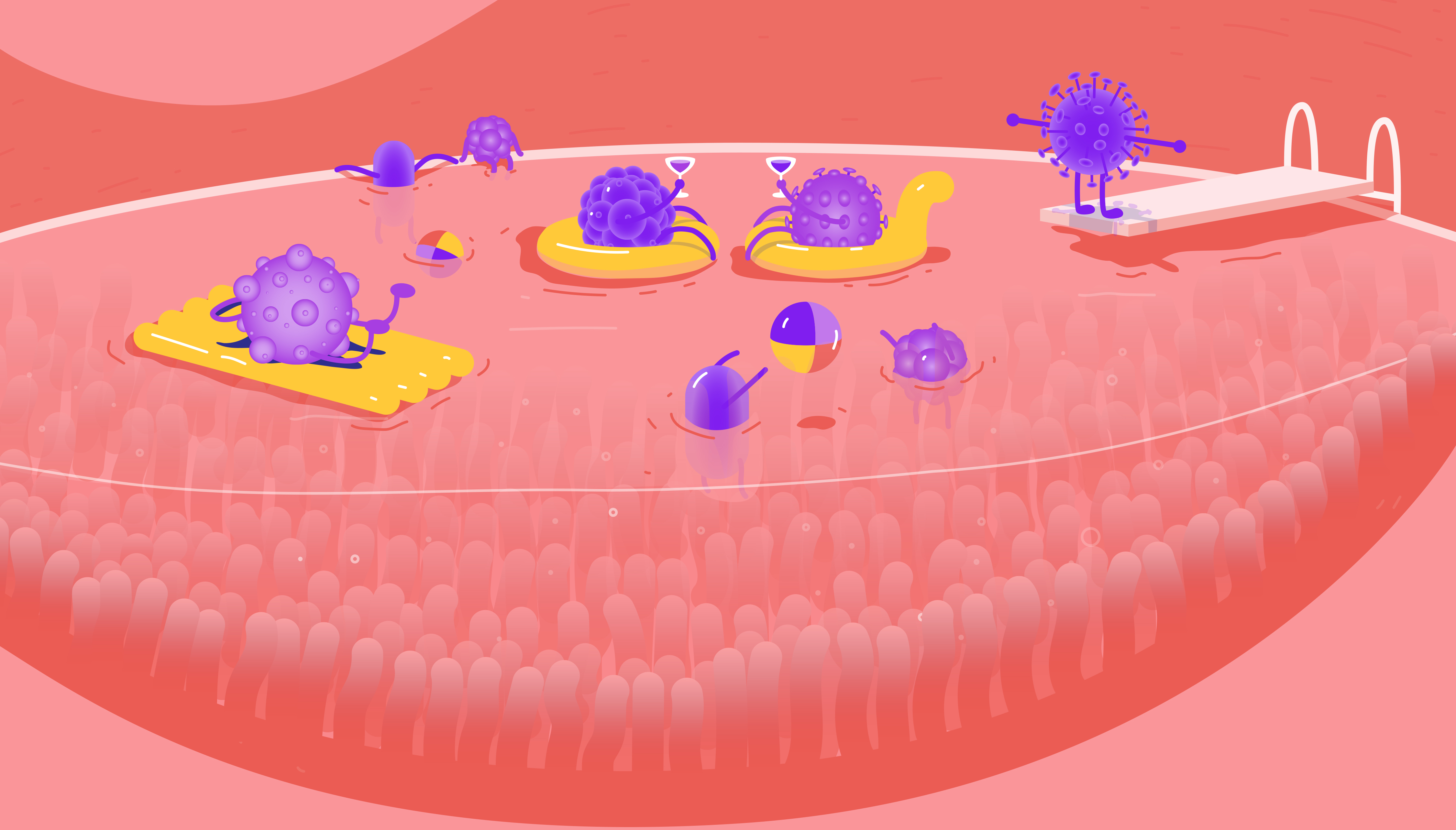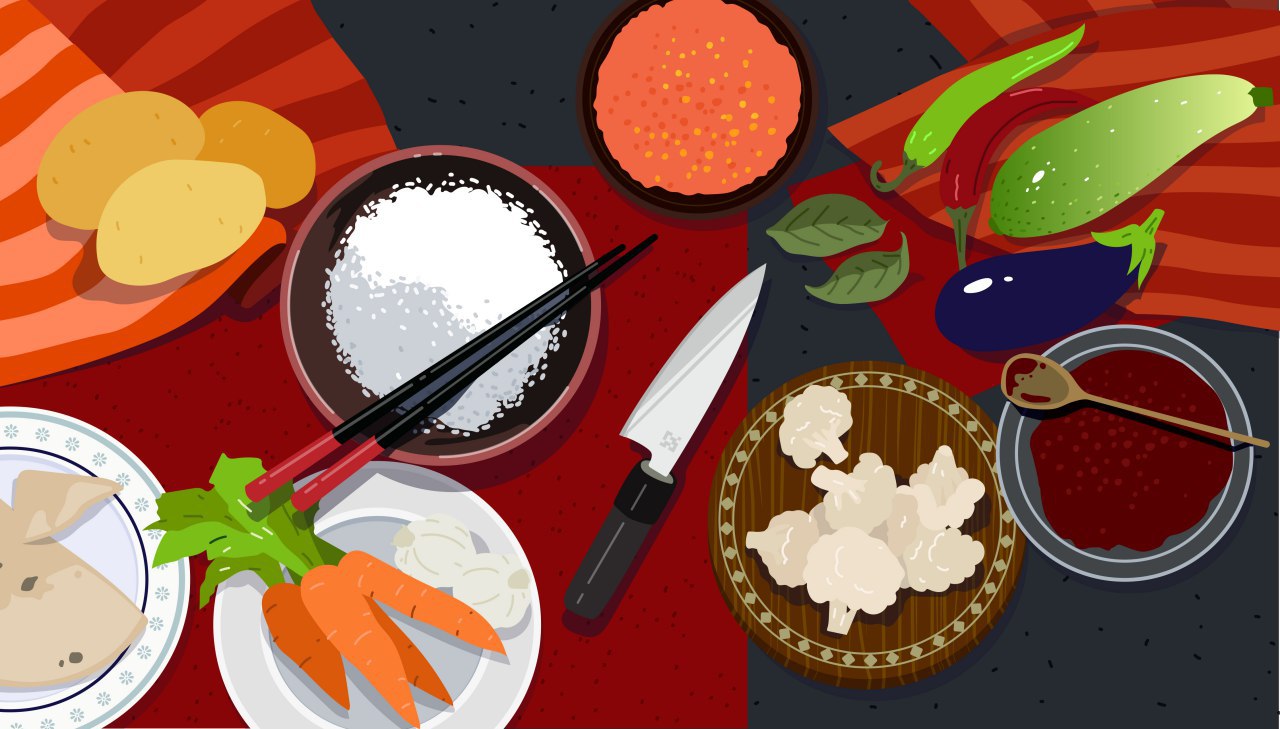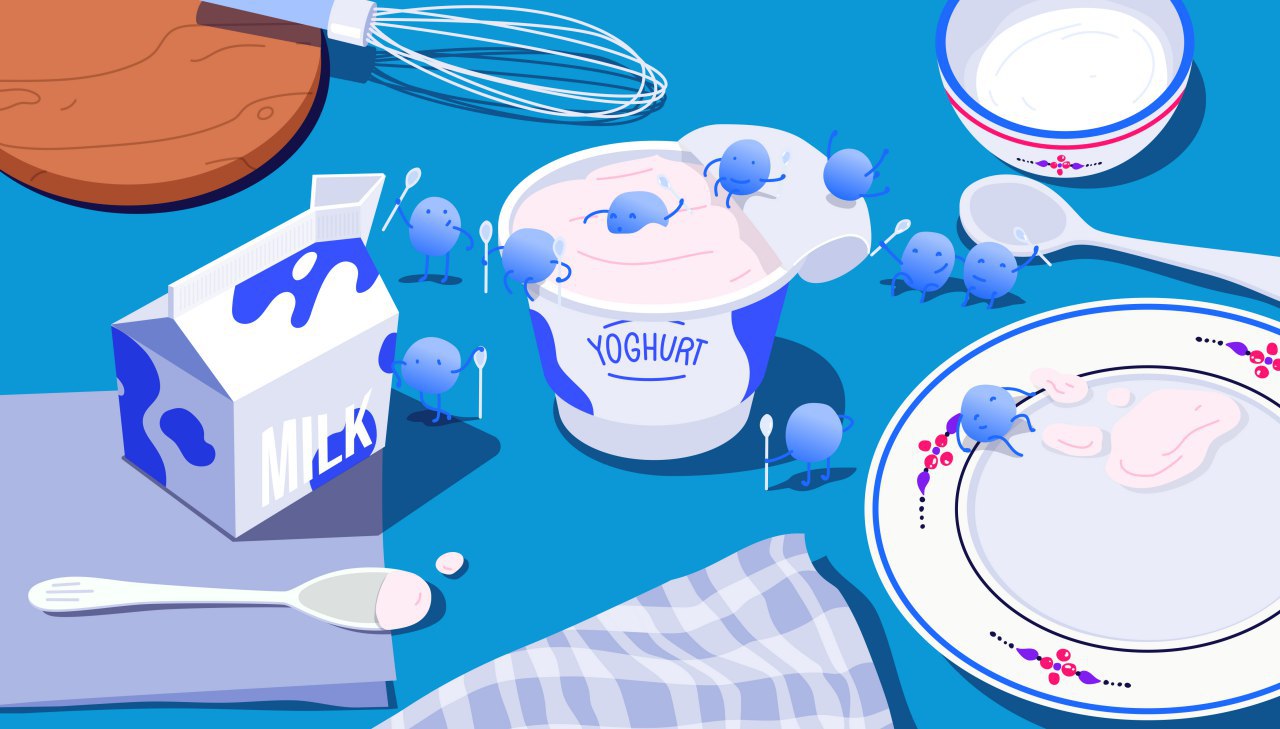Welcome to our Beat The Bloat series that explores all the common causes of bloating and what you can do to ease that poo.
☝️ DISCLAIMER Always consult a GP before removing food groups from your diet. Changes in eating habits should be overseen by registered healthcare professionals who are qualified to guide patients in the correct application and implementation of medically-indicated diets.
This week we’re going to explore how dysbiosis, fibre intake and FODMAPs foods can leave you bloated like a hot air balloon and what to do about it.
There can be some confusion when it comes to describing these sensations of discomfort. When doctors talk about bloating, they are often referring to gassiness and feeling full around the waist. If there is measurable swelling around the gut, it is called abdominal distension.
In some cases, you may notice bloating because your wedding ring sits too tight on your finger or your clothes feel just a smidge smaller than they were yesterday. In which case, you might say you feel bloated, but it might actually be fluid retention.
Dysbiosis: the unhappy gut microbiome
Many things can have a negative impact on your gut microbes, especially diet and antibiotics. In particular, a poor diet made up of mostly processed foods and refined sugars can reduce the diversity of your microbes and increase the representation of gas-producing bacteria.
On top of that, antibiotics, infections and stress can affect the composition of your microbiome, allowing the overgrowth of opportunistic microbes that cause gastrointestinal distress. These opportunistic microbes can produce different types of gases that have clinical associations with digestive disorders.
And by digestive distress, we mean gas, and other symptoms like cramping and pain. While much pleasure can be derived from the odd toot of the ol’ horn, excessive gas production can cause serious discomfort.
Pain and cramping can leave you lethargic and uninclined to go to work, frolic or even spend time with friends. In some cases, you might not be able to shut off the foghorn. In others, you may be producing odours so unspeakable that you even disgust yourself.
🥦 BEAT THE BLOAT Enhance your diet with plants and actual ingredients that you can recognise. Vegetables, fruit, seeds, nuts and legumes provide sustenance for your good bacteria that help keep opportunistic beasties in check. Regular physical activity, even walking, can also diversify your gut microbes and encourage “beneficial” bacteria to set up in your colon. You can also introduce fermented foods like yoghurt with live cultures, kefir, kimchi and miso to your diet.
Fibre intake: don't be a hero
It's true that most people suffer from lack of fibre in their diet. However, radically increasing your intake of dietary fibres and prebiotics by upping the quantity of hard-to-digest plant foods you eat also has a few temporary downsides.
Gut bacteria are equipped to break down far more dietary fibres than the human digestive system. And when doing so, they turn these fibres into beneficial substances like butyrate and vitamins that have health benefits. Unfortunately, in the process they can produce gases.
This is all well and good for long-term adepts of fruit, veg, nuts, legumes and whole grains because their microbes have adapted: they are diversified and capable of effectively managing these hard-to-digest fibres.
At the same time, soluble fibers attract more water into the stool, making it bigger and leading to feelings of bloatedness. Nevertheless, this type of fibre helps food waste move through the gut on its journey to the sewer, making it an important component of a healthy diet.
One study investigated the consequences of a high-fibre diet on flatulence on a group of people by alternating between an average diet and a “challenge” diet rich in fibre. The researchers found that such diets increased the frequency of anal gas, but not the overall volume of gas produced in the gut, thus debunking patient complaints of “excessive evacuation of gas per anus”.
In any case, such symptoms usually subside after a brief transition period: plenty of anecdotal evidence indicates just 1–2 weeks after the initial dietary change. FODMAPs, specific types of fibres that cause gastrointestinal discomfort, are discussed below.
📝 BEAT THE BLOAT Every human body and every gut microbiome is unique, this is what’s important. Pay attention to what you eat, keep track of meals and don’t binge on foods you know are going to fill you with hot air. A tin of black beans does not a dinner make, so mix it up. Prep a variety of vegetables for your weekly meals and add them in small amounts to your dishes. Basically, don’t be a hero - it’s the best way to ruin your good intentions.
FODMAPs: more than a complicated acronym
It is indicated for a subtype of irritable bowel syndrome that is accompanied by small intestinal bacterial overgrowth (SIBO). Doctors may also follow this protocol for specific cases of functional gastrointestinal symptoms like gas, pain and cramping.
FODMAP types of dietary fibre are found plant foods that can cause discomfort as they are fermented (broken down by gut microbes) during the process of digestion. It includes an exclusion phase of a long list of fruit, vegetables, legumes and whole grains, followed by a progressive reintroduction phase of the same foods to identify digestive sensitivity.
It has been indicated that these foods may provoke an immune system response after elevated histamine markers were identified in IBS patient studies. Histamine is a compound involved in immune responses, including allergies. However, the authors of a 2017 review titled “Controversies and Recent Developments of the Low-FODMAP Diet” debated several aspects of this diet.
The review confirmed that patients on low-FODMAP diets have lower histamine levels. But the researchers raised doubts about the efficacy of the exclusion phase. Furthermore, they suggest, like a number of studies, that “a low FODMAP diet might induce potential ‘unhealthy’ changes at the microbial level but requires long-term studies.”
At the same time, this review also indicated that gut hypnotherapy provided similar success in symptom relief. It further highlighted several risks, in addition to alterations to the gut microbiome, including inappropriate application of the diet leading to nutritional inadequacies and possible increased risk for disordered eating behaviours.
👩⚕️ BEAT THE BLOAT Chronic digestive discomfort can seriously affect your quality of life. And while the Internet is a fantastic tool for self-education, it is absolutely essential to consult a qualified healthcare practitioner who has access to approved diagnostic tools in order to identify whether a low-FODMAP diet is a suitable solution. The biological mechanisms behind digestive irritation are complex and may require several different tests to identify the cause.
Next time on Beat the Bloat
We are well into our ABCs of bloating now and we hope you have learned something new about diet, gassy emissions and your gut microbes. In our final installment of this Beat The Bloat series, we will get down and dirty with hard facts on lactose intolerance, menstruation and salt.
Should you get a gut microbes test?
At Atlas Biomed, we are particularly passionate about your gut microbes and how they can influence your health. In fact, our team of microbiome researchers and biostatistician experts that developed this test work on projects around the world and have published papers in scientific journals. That’s why we know so much about bloating, flatulence and how bacteria can be involved in digestive discomfort.
You can learn more about the composition of your gut microbiome and how it affects your health with the Atlas Biomed Microbiome Test. The personalised health report includes:
- Overall score for microbiome functions and disease protection
- In-depth profile of your microbes (%), including M. smithii levels
- Potential for nutrient synthesis including butyrate and vitamins
- Ability to break down fibre and personalised food recommendations
- Brand new probiotics and beneficial bacteria report
We use advanced genetic sequencing to analyse your microbiome, generating results and recommendations using algorithms based on the results of thousands of clinical trials and scientific papers. This allows us to identify your individual traits and generate personalised food recommendations to enhance your microbiome and overall health.
If you've already taken the test, here are links to your results and cool features in your personal account.
| Microbiome rating | Microbiota diversity |
| Dietary fibre metabolism | Butyrate synthesis potential |
| Microbiome composition | Probiotics & beneficial bacteria |
- A. Young Seo et al., Abdominal Bloating: Pathophysiology and Treatment
- Gas and Bloating—Controlling Emissions
- Kirsty Brown et al., Diet-Induced Dysbiosis of the Intestinal Microbiota and the Effects on Immunity and Disease
- M. Conlon & A.R. Bird, The Impact of Diet and Lifestyle on Gut Microbiota and Human Health
- Chaysavanh Manichanh et al., Anal gas evacuation and colonic microbiota in patients with flatulence: effect of diet
- Beatrice Salvioli et al., Origin of gas retention and symptoms in patients with bloating
- K. Triantafyllou et al., Methanogens, Methane and Gastrointestinal Motility
- Anna Foley et al., Management Strategies for Abdominal Bloating and Distension
- Chaysavanh Manichanh et al., Anal gas evacuation and colonic microbiota in patients with flatulence: effect of diet
- K. McIntosh et al., FODMAPs alter symptoms and the metabolome of patients with IBS: a randomised controlled trial
- K. Murray et al., Differential effects of FODMAPs (fermentable oligo-, di-, mono-saccharides and polyols) on small and large intestinal contents in healthy subjects shown by MRI
- M. Pimentel et al., Gas and the microbiome
- Peta Hill et al., Controversies and Recent Developments of the Low-FODMAP Diet
- Expert Commentary – Bloating, Distension, and the Irritable Bowel Syndrome
- Satish S. C. Rao et al., Brain fogginess, gas and bloating: a link between SIBO, probiotics and metabolic acidosis
- J. Dionne et al., A Systematic Review and Meta-Analysis Evaluating the Efficacy of a Gluten-Free Diet and a Low FODMAPs Diet in Treating Symptoms of Irritable Bowel Syndrome





















